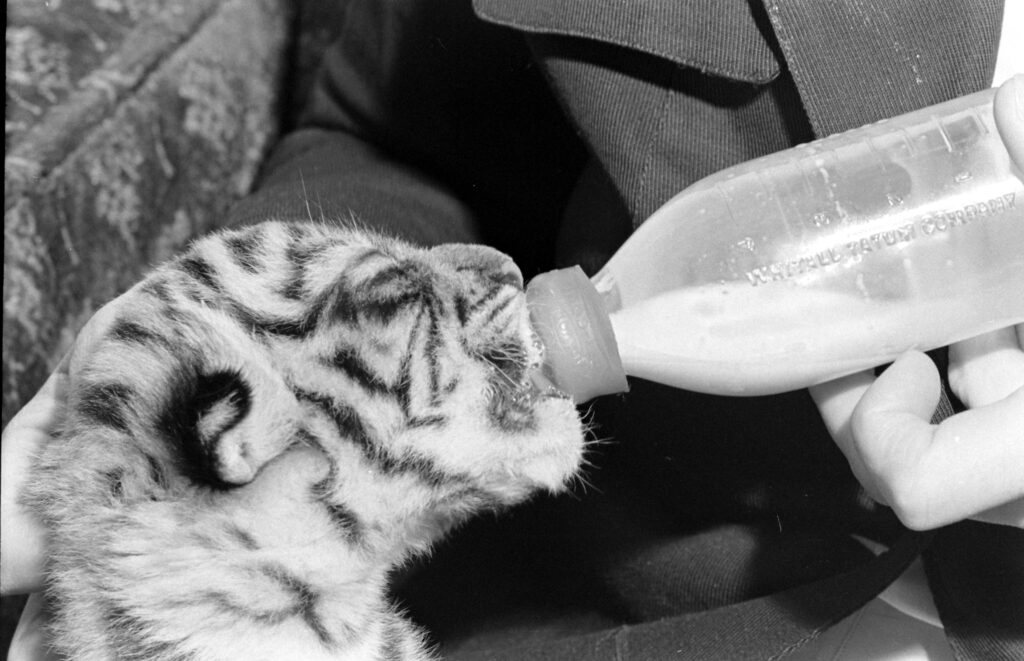Written By: Eliza Berman
Kids today have plenty of ways to “see” a dinosaur, not the least of which is the “Jurassic” series of movies. But in 1939, there was plenty of drama in the sheer possibility of seeing dinosaur fossils in a museum. That year, New York City’s American Museum of Natural History debuted the largest fossil exhibit in the world, consisting of 200 specimens covering a time period of 200 million years.
Much of the collection came thanks to the paleontologist Barnum Brown, who had been excavating fossils since the 1890s. Among Brown’s treasures were a 66-ft. brontosaurus discovered in Wyoming and a nodosaurus, “resembling a huge horned toad,” originally found in 10,000 pieces near Billings, Mont.
Decades before the animatronic wonders of dinosaur movies, these museum displays, which showed the awesome scale of these extinct behemoths, were capable of conjuring a world of wonder.
Liz Ronk edited this gallery for LIFE.com. Follow her on Twitter @lizabethronk.

The Trachodon was most common of dinosaurs. In the back of its bill it had 2,500 teeth which, like the bullets in a machine gun, replaced one another as enamel wore off.
Hansel Mieth The LIFE Picture Collection/Shutterstock

Tyrannosaurus, the largest of flesh-eaters, impressed with a skulled that weighed a thousand pounds.
Hansel Mieth The LIFE Picture Collection/Shutterstock

This fossil demonstrating the 15-foot step of an Iguanodont dinosaur was found in the roof of a coal mine at Cedaredge, Colo. The coal was mined away and the stone footprints were left.
Hansel Mieth The LIFE Picture Collection/Shutterstock

This Iguanodont dinosaur had a duck-like bill with a few teeth. The tail, twice as long as the body, propelled the reptile through water.
Hansel Mieth The LIFE Picture Collection/Shutterstock

This seven-foot Placodus lived in the ocean, had well-developed flipper feet and ate nothing but mollusks.
Hansel Mieth The LIFE Picture Collection/Shutterstock

The American Museum of Natural History dinosaur exhibit in New York, 1939.
Hansel Mieth The LIFE Picture Collection/Shutterstock

Behind the scenes at the American Museum of Natural History Dinosaur exhibit in New York, 1939.
Hansel Mieth The LIFE Picture Collection/Shutterstock

Display at the American Museum of Natural History Dinosaur exhibit in New York, 1939.
Hansel Mieth The LIFE Picture Collection/Shutterstock

Workers handled a fragile fossil at the American Museum of Natural History Dinosaur exhibit in New York, 1939.
Hansel Mieth The LIFE Picture Collection/Shutterstock

This well-preserved Plateosaurus was one of the earliest dinosaurs. It stood on its hind legs, and had front legs which were terminated by powerful talons.
Hansel Mieth The LIFE Picture Collection/Shutterstock

Display at the American Museum of Natural History Dinosaur exhibit in New York, 1939.
Hansel Mieth The LIFE Picture Collection/Shutterstock

The largest land tortoise that ever existed was found in India. This animal lived a million years ago, weighed 2,500 pounds and measured seven feet from tail to the head.
Hansel Mieth The LIFE Picture Collection/Shutterstock




















